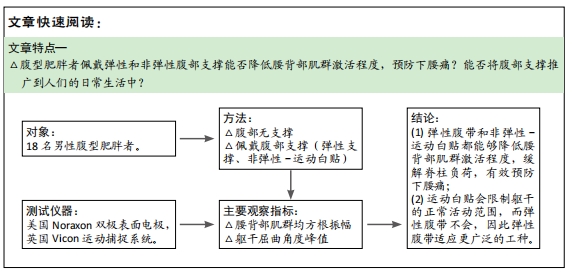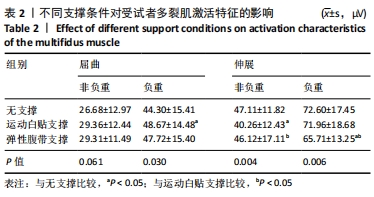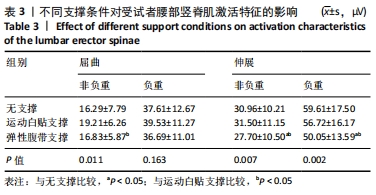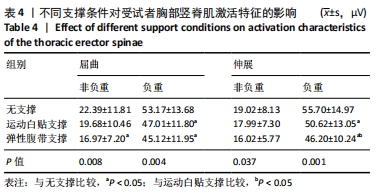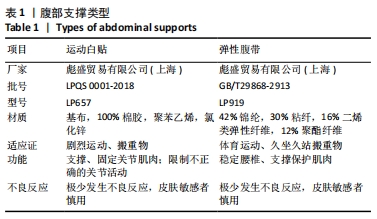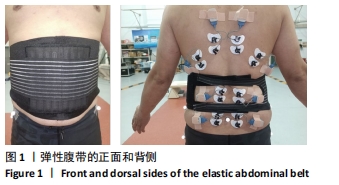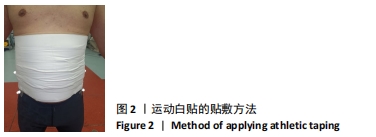[1] MELLOH M, ELFERING A, KäSER A, et al. What is the best time point to identify patients at risk of developing persistent low back pain? J Back Musculoskelet Rehabil. 2015;28(2):267-276.
[2] ALONSO-GARCíA M, SARRíA-SANTAMERA A. The Economic and Social Burden of Low Back Pain in Spain: A National Assessment of the Economic and Social Impact of Low Back Pain in Spain. Spine (Phila Pa 1976). 2020;45(16):E1026-E1032.
[3] CHOLEWICKI J, IVANCIC PC, RADEBOLD A. Can increased intra-abdominal pressure in humans be decoupled from trunk muscle co-contraction during steady state isometric exertions? Eur J Appl Physiol. 2002;87(2):127-133.
[4] HOOGENDOORN WE, BONGERS PM, DE VET HC, et al. Flexion and rotation of the trunk and lifting at work are risk factors for low back pain: results of a prospective cohort study. Spine (Phila Pa 1976). 2000; 25(23):3087-3092.
[5] 杨立杰,欧阳林,陈鼎伟,等.下腰疼痛的生物力学分析[J].中国组织工程研究,2020,24(33):5267-5271.
[6] DAI H, ALSALHE T, CHALGHAF N, et al. The global burden of disease attributable to high body mass index in 195 countries and territories, 1990-2017: An analysis of the Global Burden of Disease Study. PLoS Med. 2020;17(7):e1003198.
[7] YANG L, MU L, HUANG K, et al. Abdominal adipose tissue thickness measured using magnetic resonance imaging is associated with lumbar disc degeneration in a Chinese patient population. Oncotarget. 2016; 7(50):82055-82062.
[8] HOWARTH SJ, CALLAGHAN JP. Compressive force magnitude and intervertebral joint flexion/extension angle influence shear failure force magnitude in the porcine cervical spine. J Biomech. 2012;45(3):484-490.
[9] MYUNG E, NETO J, MURTA G, et al. ANAMT Technical Guideline (DT 05): prevention of occupational low back pain through back belts, lumbar support or braces. Rev Bras Med Trab. 2020;16(4):524-531.
[10] AMMENDOLIA C, KERR MS, BOMBARDIER C. Back belt use for prevention of occupational low back pain: a systematic review. J Manipulative Physiol Ther. 2005;28(2):128-134.
[11] CANADIAN TASK FORCE ON PREVENTIVE HEALTH CARE. Use of back belts to prevent occupational low-back pain. Recommendation statement from the Canadian Task Force on Preventive Health Care. Can Med Assoc J. 2003;169(3):213-214.
[12] BOONKERD C, LIMROONGREUNGRAT W. Elastic therapeutic tape: do they have the same material properties? J Phys Ther Sci. 2016;28(4): 1303-1306.
[13] MIYAMOTO K, IINUMA N, UEKI S, et al. Effects of abdominal belts on the cross-sectional shape of the trunk during intense contraction of the trunk muscles observed by computer tomography. Clin Biomech. 2008; 23(10):1220-1226.
[14] JORGENSEN MJ, MARRAS WS. The effect of lumbar back support tension on trunk muscle activity. Clin Biomech. 2000;15(4):292-294.
[15] FU W, LIU Y, ZHANG S, et al. Effects of local elastic compression on muscle strength, electromyographic, and mechanomyographic responses in the lower extremity. J Electromyogr Kinesiol. 2012;22(1): 44-50.
[16] YEN SC, FOLMAR E, FRIEND KA, et al. Effects of kinesiotaping and athletic taping on ankle kinematics during walking in individuals with chronic ankle instability: A pilot study. Gait Posture. 2018;66(1): 118-123.
[17] HUEBNER A, FAENGER B, SCHENK P, et al. Alteration of Surface EMG amplitude levels of five major trunk muscles by defined electrode location displacement. J Electromyogr Kinesiol. 2015;25(2):214-223.
[18] ESCAMILLA R, LEWIS C, PECSON A, et al. Muscle Activation Among Supine, Prone, and Side Position Exercises With and Without a Swiss Ball. Sports Health. 2016;8(4):372-379.
[19] PERCHTHALER D, HAUSER S, HEITKAMP HC, et al. Acute effects of whole-body vibration on trunk and neck muscle activity in consideration of different vibration loads. J Sports Sci Med. 2015;14(1): 155-162.
[20] LUDVIG D, PREUSS R, LARIVIERE C. The effect of extensible and non-extensible lumbar belts on trunk muscle activity and lumbar stiffness in subjects with and without low-back pain. Clin Biomech. 2019;67(1): 45-51.
[21] MOKHTARINIA H, GHAMARY J, MALEKI-GHAHFAROKHI A, et al. The new “Tehran Back Belt”: Design then testing during a simulated sitting task improved biomechanical spine muscle activity. Health Promot Perspect. 2019;9(2):115-122.
[22] KINGMA I, FABER GS, SUWARGANDA EK, et al. Effect of a stiff lifting belt on spine compression during lifting. Spine (Phila Pa 1976). 2006; 31(22):E833-839.
[23] LAVENDER S, SHAKEEL K, ANDERSSON G, et al. Effects of a lifting belt on spine moments and muscle recruitments after unexpected sudden loading. Spine (Phila Pa 1976). 2000;25(12):1569-1578.
[24] HEALEY EL, BURDEN AM, MCEWAN I M, et al. The impact of increasing paraspinal muscle activity on stature recovery in asymptomatic people. Arch Phys Med Rehabil. 2008;89(4):749-753.
[25] GRANATA KP, MARRAS WS, DAVIS KG. Biomechanical assessment of lifting dynamics, muscle activity and spinal loads while using three different styles of lifting belt. Clin Biomech. 1997;12(2):107-115.
[26] YH L, SM K. Effect of belt pressure and breath held on trunk electromyography. Spine (Phila Pa 1976). 2002;27(3):282-290.
[27] 陈岚岚,韩晓鸣,胡飞锋,等.不同方式躯干运动时腰部肌肉表面肌电信号特征研究[J].杭州师范大学学报(自然科学版),2019,18(5): 555-560.
[28] MARRAS WS, JORGENSEN MJ, DAVIS KG. Effect of foot movement and an elastic lumbar back support on spinal loading during free-dynamic symmetric and asymmetric lifting exertions. Ergonomics. 2000;43(5): 653-668.
[29] CHOLEWICKI J. The effects of lumbosacral orthoses on spine stability: what changes in EMG can be expected? J Orthop Res. 2004;22(5): 1150-1155.
[30] KAWCHUK G, EDGECOMBE T, WONG A, et al. A non-randomized clinical trial to assess the impact of nonrigid, inelastic corsets on spine function in low back pain participants and asymptomatic controls. Spine (Phila Pa 1976). 2015;15(10):2222-2227.
[31] SHAHVARPOUR A, PREUSS R, SULLIVAN MJL, et al. The effect of wearing a lumbar belt on biomechanical and psychological outcomes related to maximal flexion-extension motion and manual material handling. Appl Ergon. 2018;69(1):17-24.
[32] LARIVIERE C, CARON JM, PREUSS R, et al. The effect of different lumbar belt designs on the lumbopelvic rhythm in healthy subjects. BMC Musculoskelet Disord. 2014;15(1):307.
[33] GIORCELLI RJ, HUGHES RE, WASSELL JT, et al. The effect of wearing a back belt on spine kinematics during asymmetric lifting of large and small boxes. Spine (Phila Pa 1976). 2001;26(16):1794-1798.
[34] BATALLER-CERVERO AV, RABAL-PELAY J, ROCHE-SERUENDO LE, et al. Effectiveness of lumbar supports in low back functionality and disability in assembly-line workers. Ind Health. 2019;57(5):588-595.
[35] KATSUHIRA J, SASAKI H, ASAHARA S, et al. Comparison of low back joint moment using a dynamic 3D biomechanical model in different transferring tasks wearing low back belt. Gait Posture. 2008;28(2): 258-264.
|
